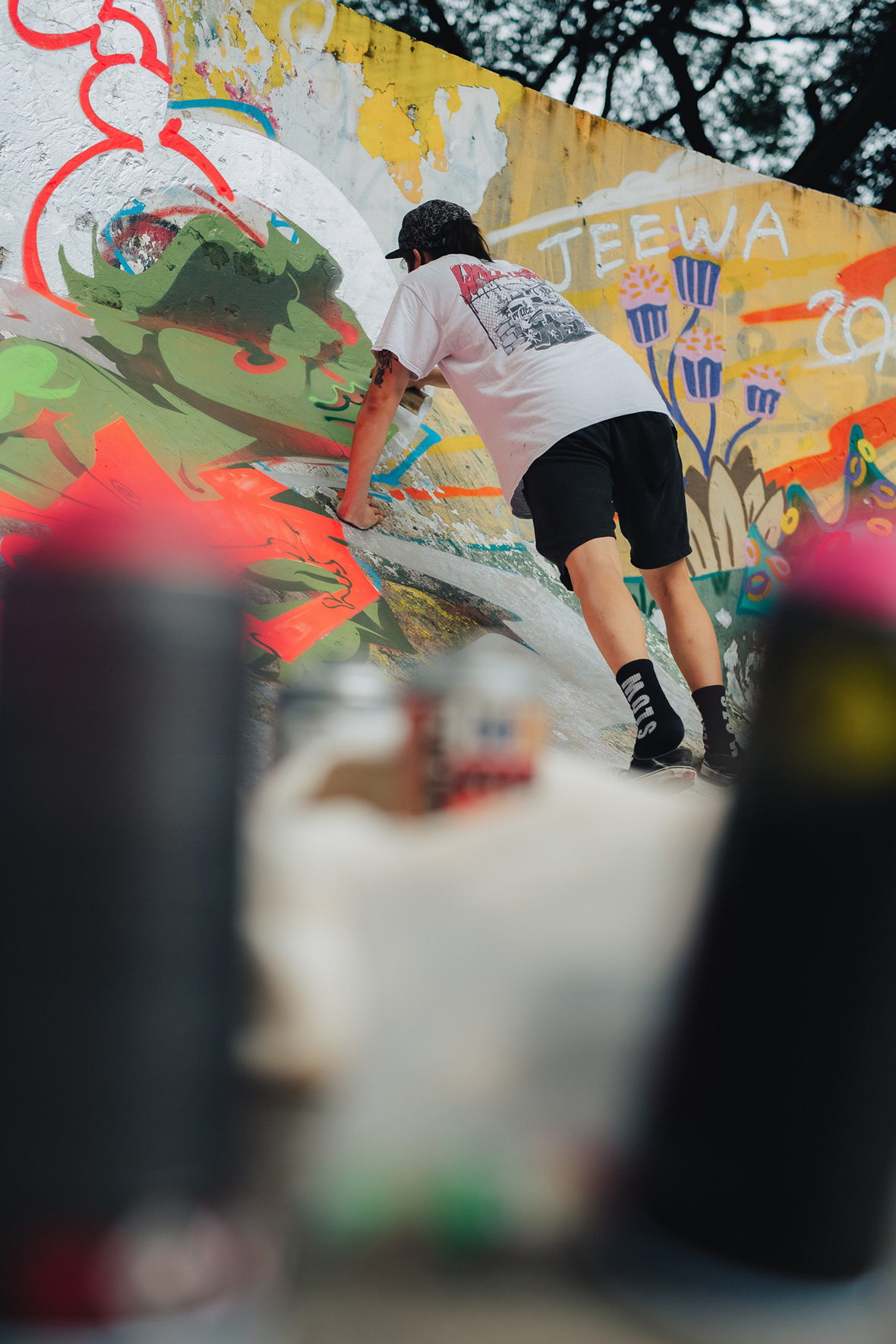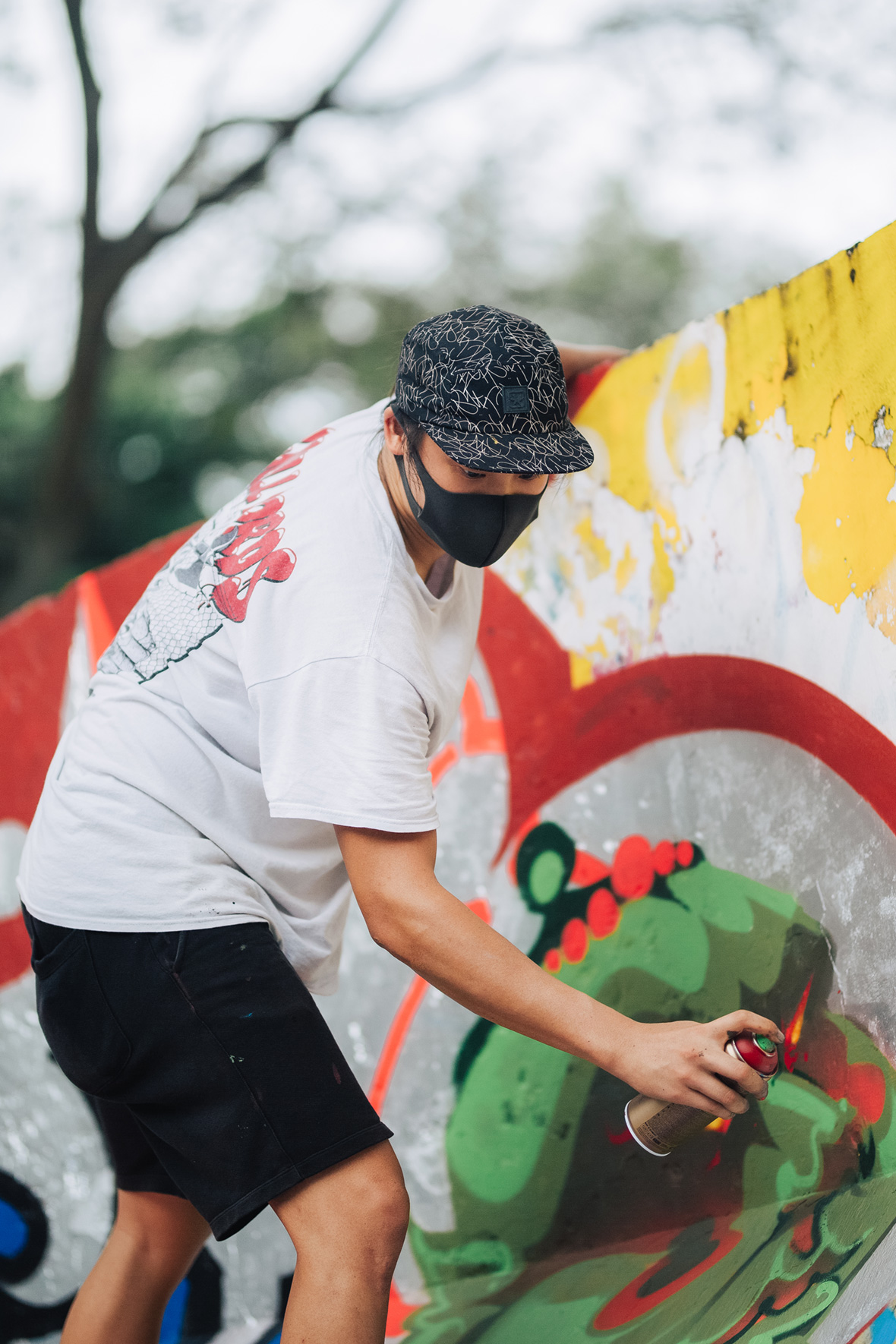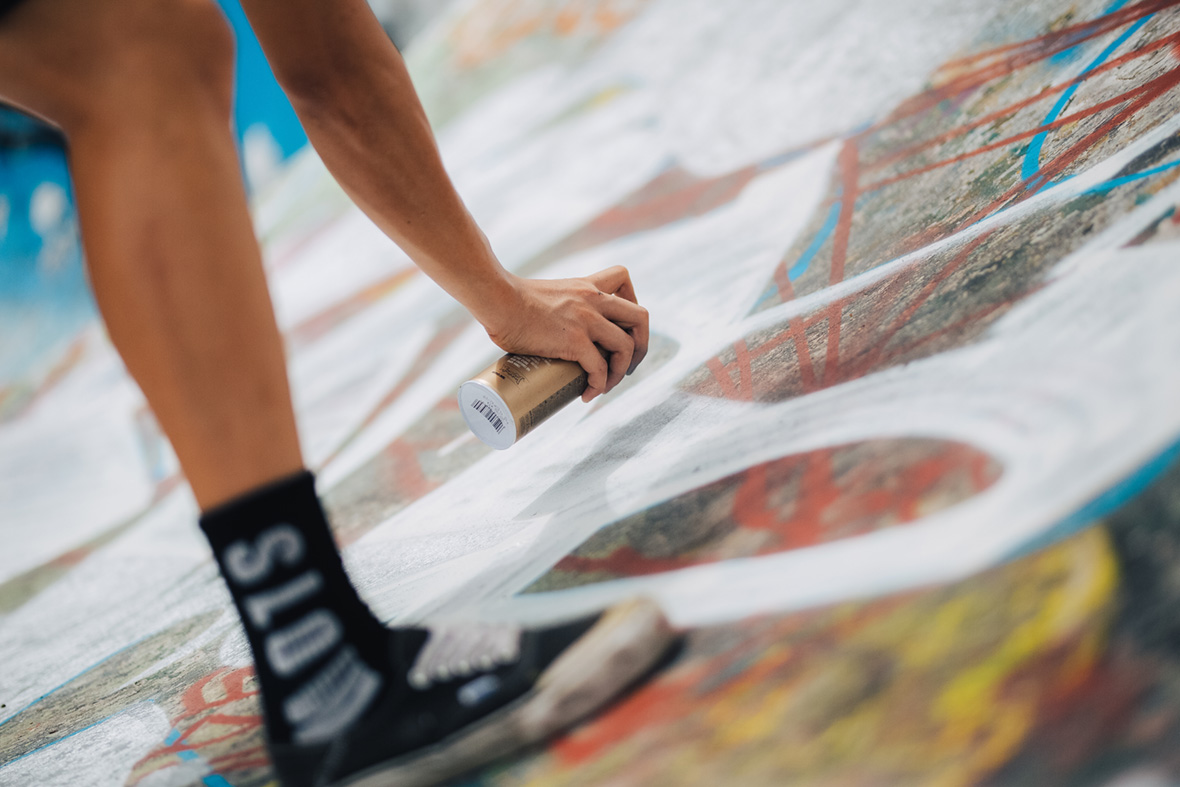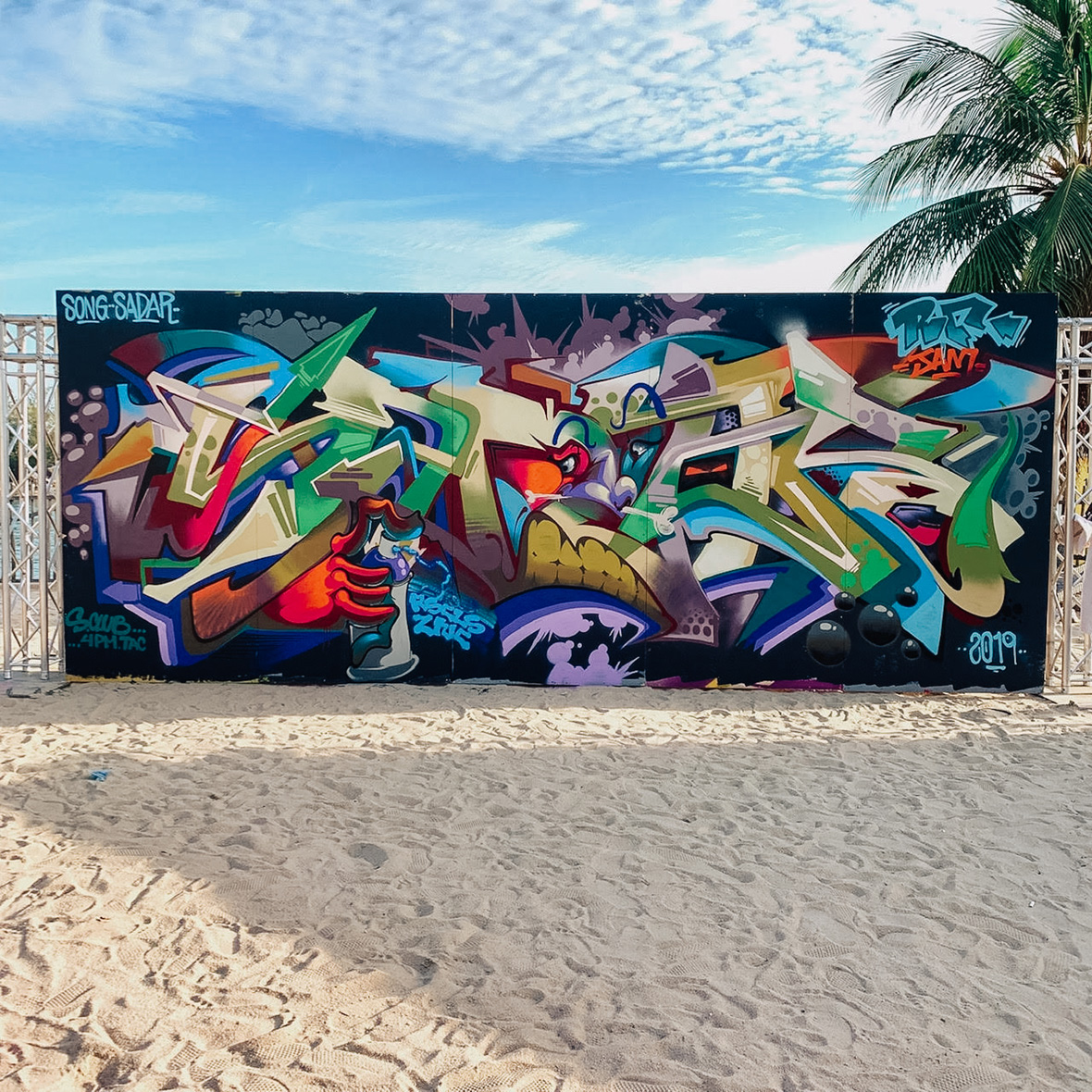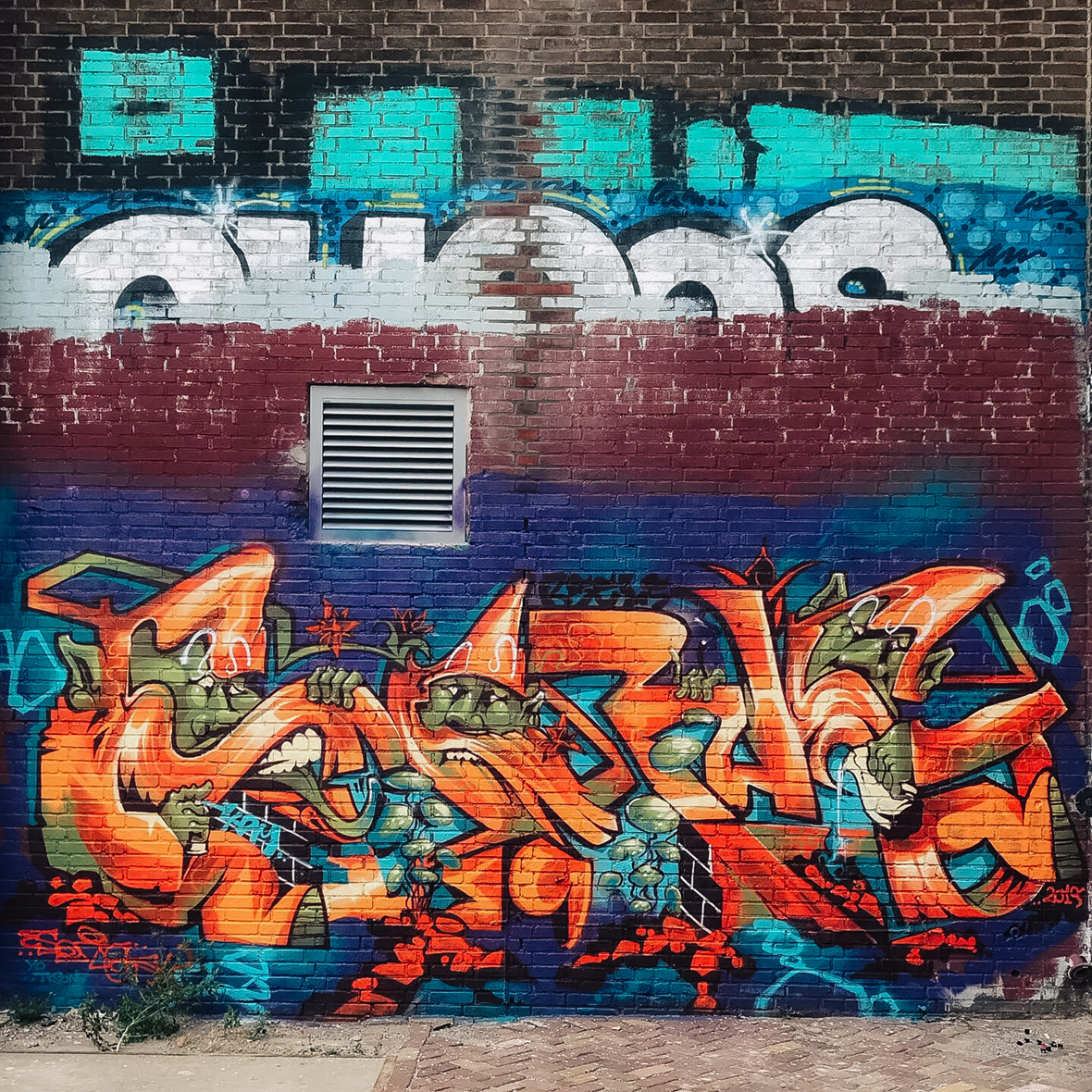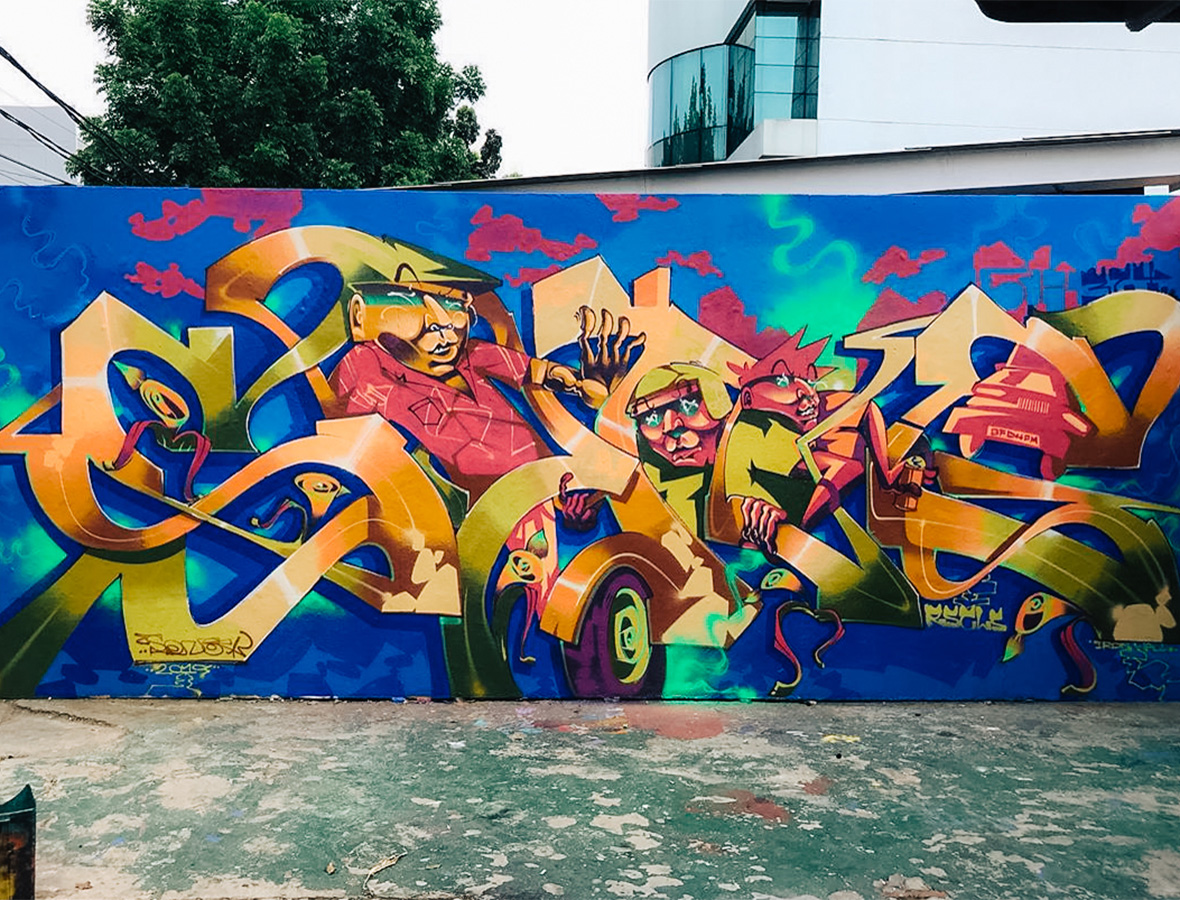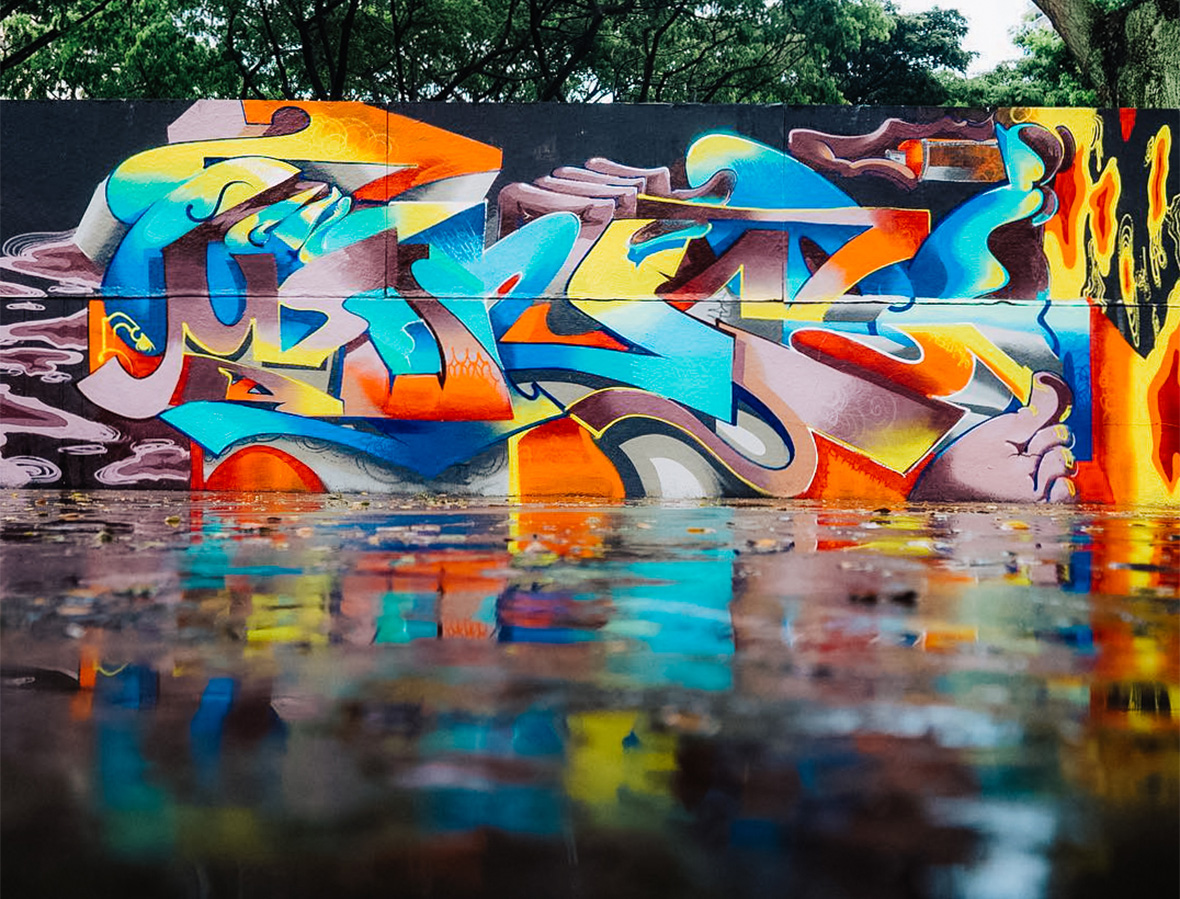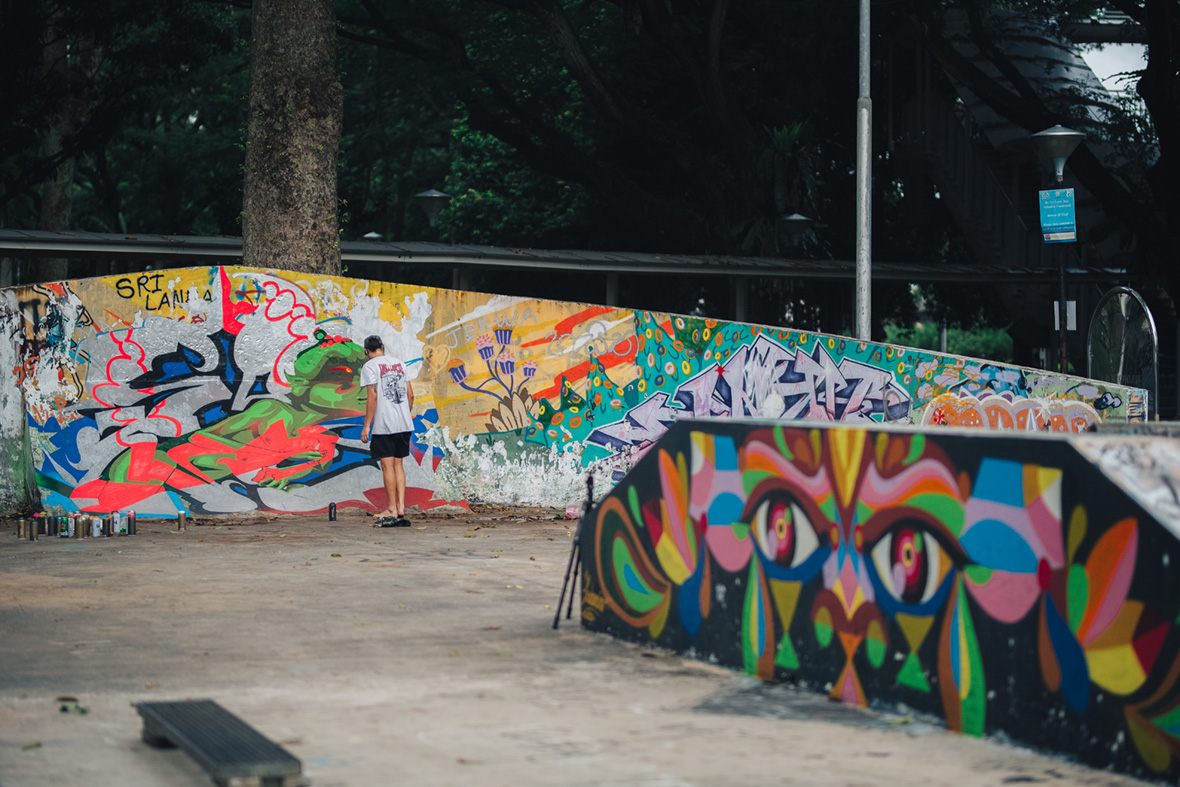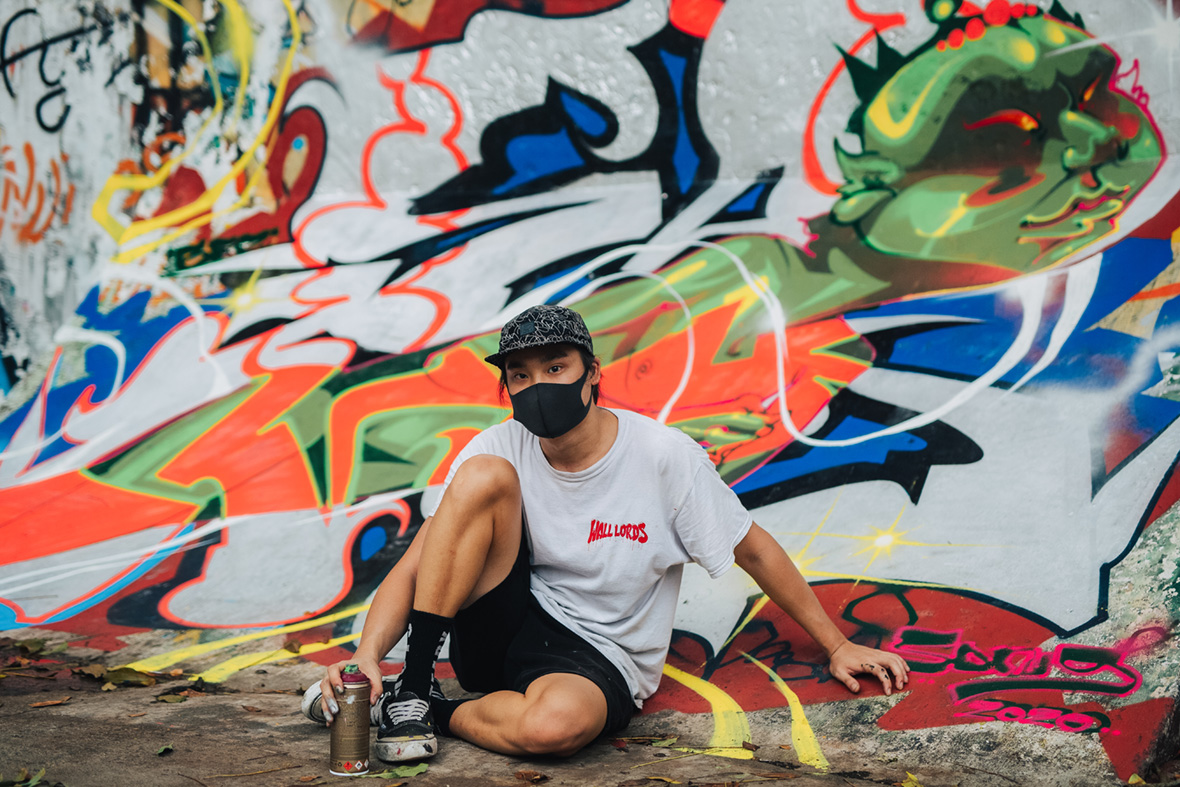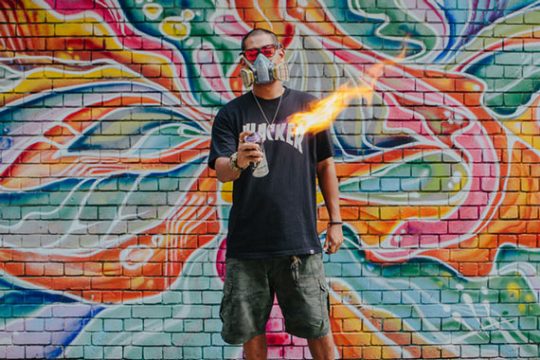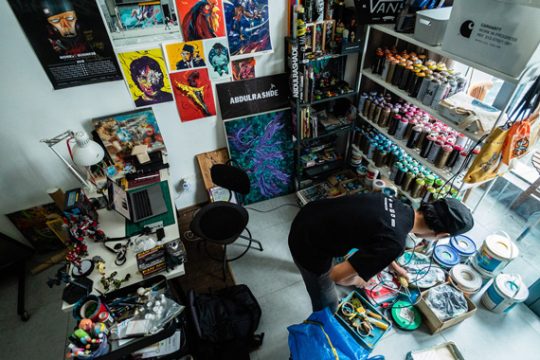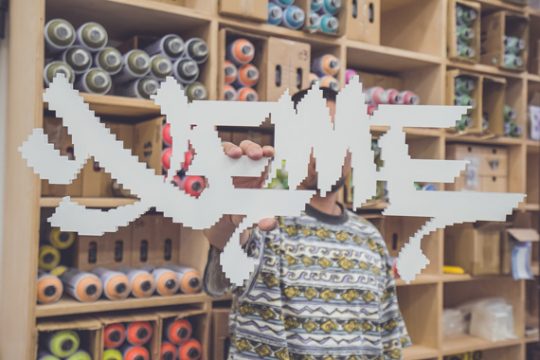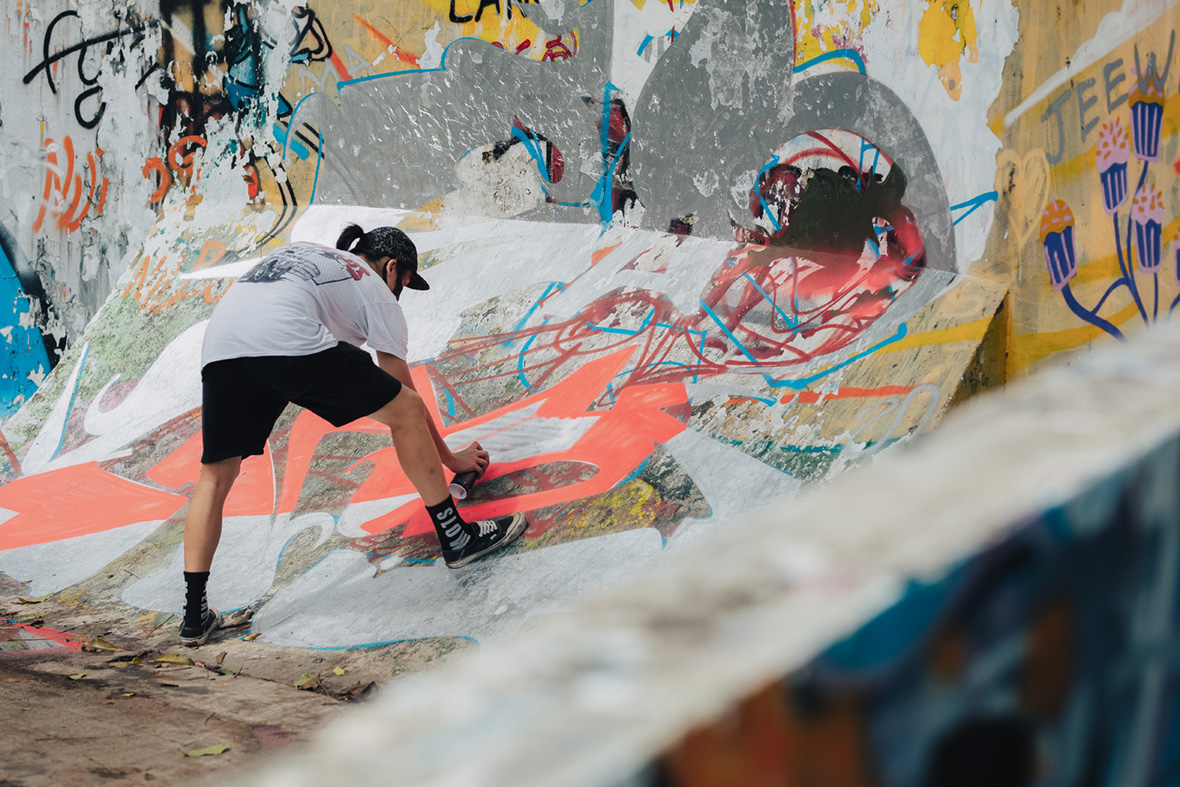
SONG belongs to the current generation of graffiti writers in Singapore, and hopefully not the last. Singapore, with its harsh anti-vandalism laws, isn’t an ideal place for an aspiring graffiti artist, and its sparkling clean streets are a stark contrast to the derelict urban canvases often prized by graffiti bombers and taggers. Despite these challenges, the 25-year-old artist is more than determined to leave his mark on the city.
SONG 是目前一代新加坡涂鸦艺术家的一员,但愿他们不是最后一代 —— 当地实施严厉的反公物破坏法,这对于怀有抱负的涂鸦艺术家来说并不算什么特别理想的事。城市中光鲜锃亮的街道与被他们视为珍宝的废弃墙面形成强烈对比,尽管面临这些挑战,这位 25 岁的艺术家仍决心在这座城市留下属于自己的印记。
Unlike his predecessors, SONG began painting graffiti at a time when this form of urban expression was being discouraged. In the early 2000s, a large crackdown on the local underground graffiti scene led the community to come under increased scrutiny from law enforcement, forcing the culture to retreat from the streets, where it truly belongs.
“Before I was introduced to it I had no idea what graffiti was, and its existence never occurred to me,” SONG says. “Growing up here, it isn’t something you notice on the streets—walk around the city and you won’t see a single tag or a sticker.”
与他的前辈所处的时代不同, SONG 开始涂鸦的时期,这种艺术形式正在当地政府遭受压制。2000 年初左右,官方对地下涂鸦场景的大规模打击导致,不少地方社区面临愈演愈烈的彻查。管制迫使涂鸦从街头离去,而街头却是涂鸦文化的重要组成部分。
SONG 说:“在认识涂鸦之前我完全不知道它是什么,我甚至从未想过有这样一种艺术形式存在。”SONG 说,“从小在新加坡长大,涂鸦不会是你在马路上能看到的东西,甚至连涂鸦签名(Tag)和贴纸都难寻踪迹。”
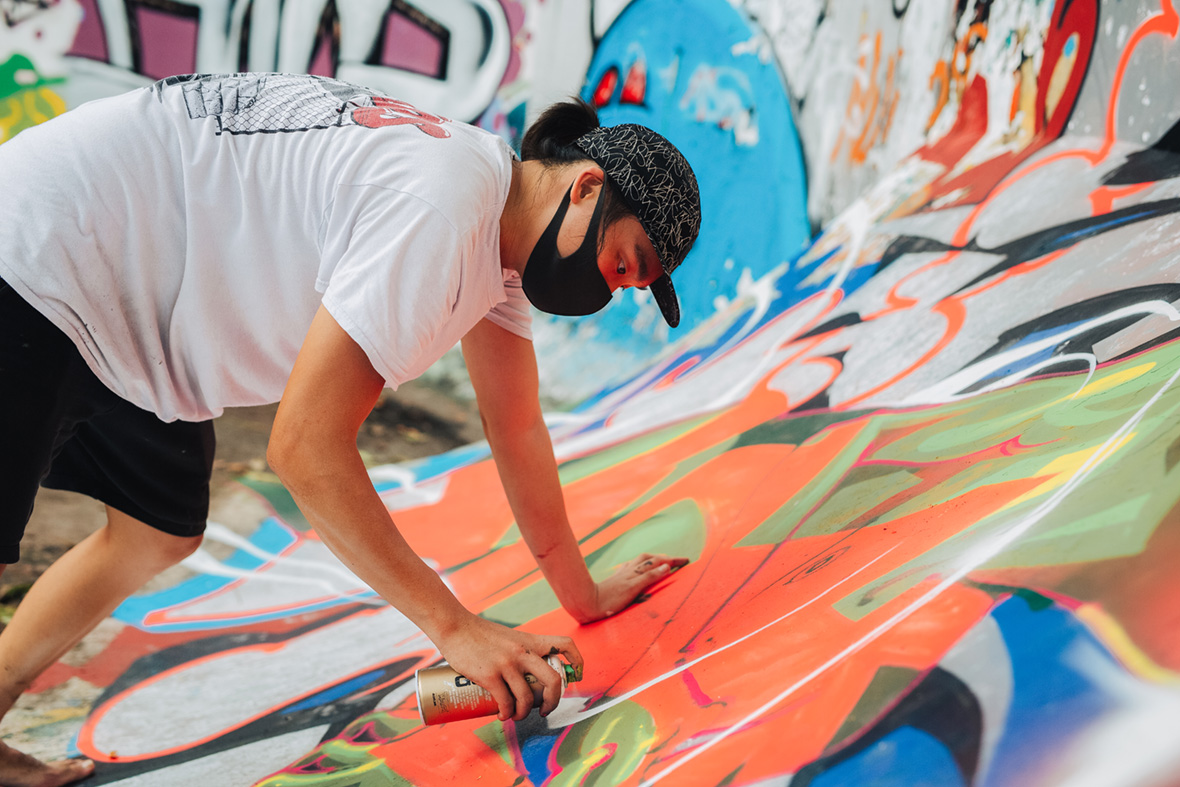
Discovering graffiti while in art school marked the beginning of a new artistic journey, and the uninhibited nature of the medium began to reshape his visual vocabulary. “Fine art involves a lot of planning, constraints, and concepts that take up a lot of time, so for me, graffiti felt free,” he says. “Graffiti feels more meaningful as it involves a very raw process that I don’t often find in the studio. Every piece I paint on a wall always surprises me—sometimes I like it and sometimes I don’t, but ultimately it’s just a reflection of my headspace then and there.”
SONG 在艺术学校时期才开始接触涂鸦,就此开启了一段崭新的艺术旅程。那种狂放不羁的艺术形式重塑了他对视觉语言的理解,“纯艺术会受到很多概念、策划等方面的约束,占去大量的时间,而涂鸦对我来说就很自在。”他说,“涂鸦不会让人在工作室里沤着,它的创作过程非常原始,具有更多意义。我在墙上创作的每一幅作品都在自己的意料之外,有时我会觉得很满意,偶尔我也不是很喜欢。但最终,它们都成为了我内心彼时彼刻的倒影。”
Traveling has been integral to SONG’s growth as a graffiti writer, as it has allowed him to take the art back to its street-side roots. “Painting overseas for the first time was where the addiction really set in for me, experiencing the adrenaline of putting up tags and throw-ups firsthand brought my attention to the graffiti fundamentals that I would have otherwise overlooked at home,” he grins.
One advantage of being based in Singapore is its close proximity to many other Southeast Asian countries—each with its own distinctive graffiti scene. In recent years, the internet has been a catalyst in fostering a community of graffiti practitioners in the region, linking up artists who are eager to connect with other like-minded individuals.
旅行对于 SONG 的艺术成长来说是不可或缺的养分,促使他将这门艺术带回街头。他咧嘴笑着说:“第一次在海外涂鸦的经历,让我对这门艺术上瘾。我亲身体验了墙上创作涂鸦签名和泡泡字(throw-ups)的刺激,那次经历带我回归涂鸦最为纯粹的文化根基。但如果我一直待在国内,很可能不会又这样的意识。”
以新加坡为根据地的一大优势是它的地理位置——毗邻其他东南亚国家,每个国家都拥有独一无二的涂鸦场景。近年来,互联网已成为维系这一带涂鸦艺术社区的催化剂,将渴望连结的志同道合者都拉拢在一起。

“In Asia, we go about graffiti in a different way,” SONG says. “For us it is something that we are passionate about that we do together, and we see graffiti as a way to connect and collaborate with one another.”
Collaboration has been an essential part of his stylistic development, and having the opportunity to paint together with some of the best has been a humbling and inspiring experience that has left a deep impression on his art.
“It is a completely different experience to see things being done in real life as opposed to the internet,” he says. “By observing the process and attitude of other artists in person, you start to understand why some artists reach a certain level. It’s something that isn’t possible from just looking at the final product online.”
“在亚洲各地,涂鸦方式不尽相同。” SONG 说。“对我们来说,涂鸦是我们共同的热爱,是连接与合作的途径。”
合作,一直是 SONG 在创作中一个重要的部分。能有机会与业界最优秀的艺术家一起涂鸦,是鼓舞人心又使人谦逊的事情,为他的艺术创作留下了深刻的烙印。
“现实中的亲眼所见和在网络里是完全不同的体验。”他说,“通过亲自观察其他艺术家的作画过程和态度,你可以理解为什么有些人能够达到某种高度。这是你单单从网上看到成品不可能领会到的。”
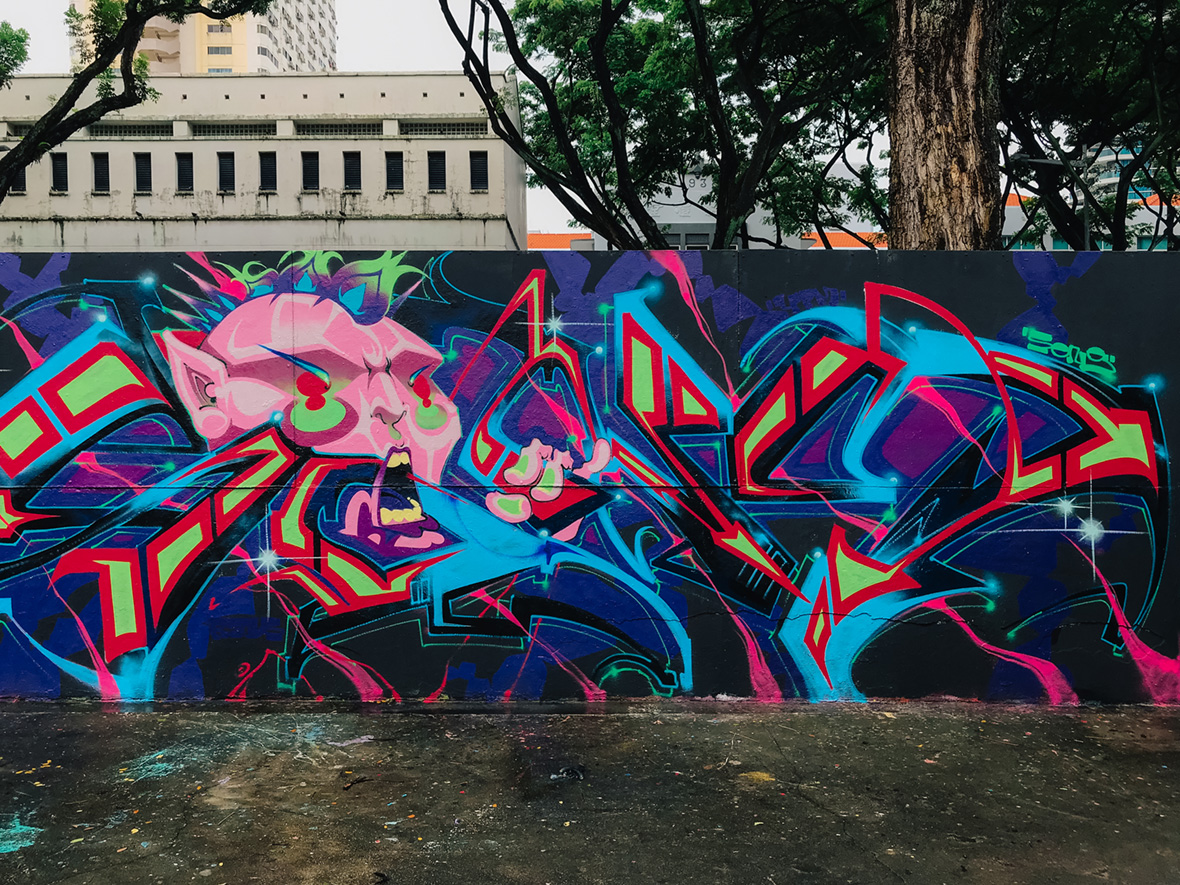
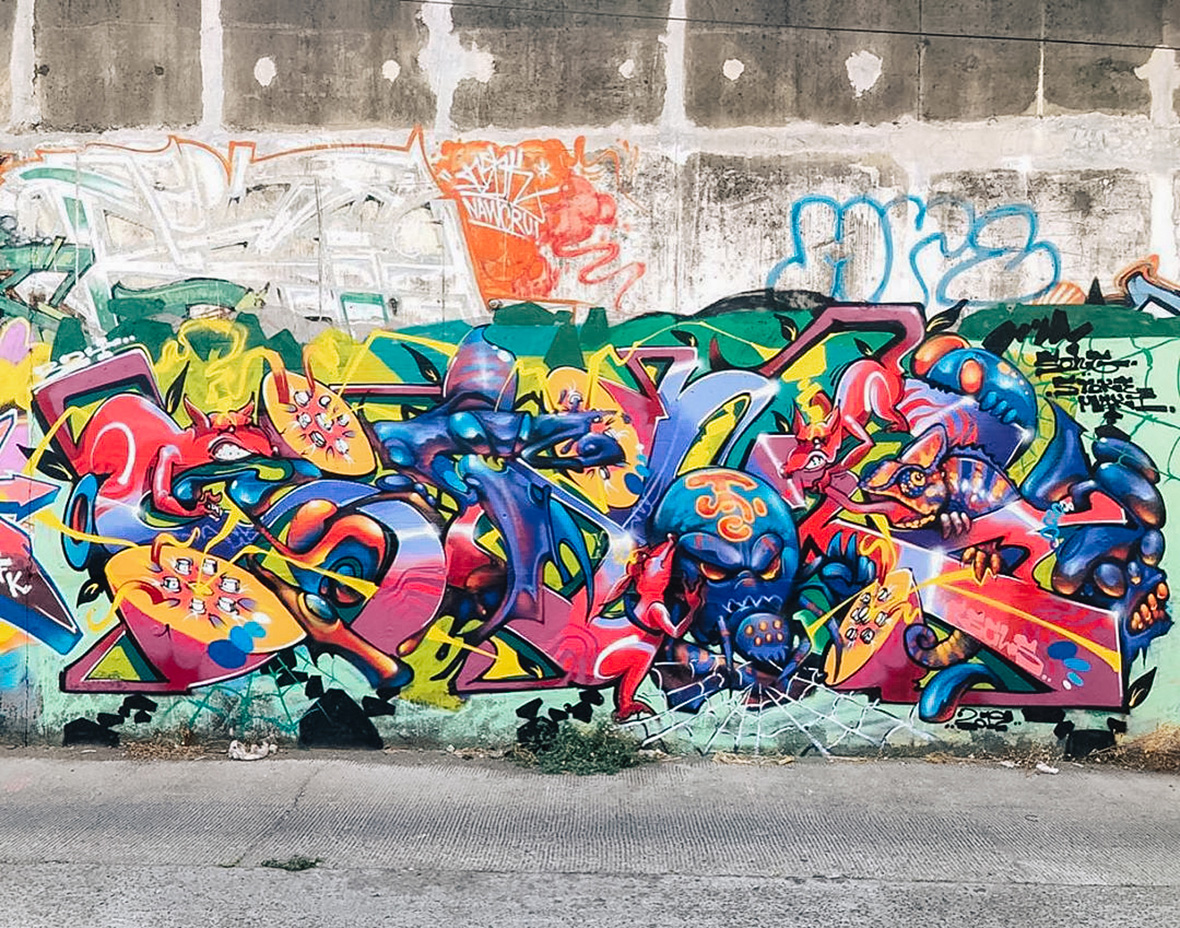
Drawing from the multitude of influences that he has absorbed during his travels, his pieces are the culmination of his personal experiences—emotions and symbols come alive together under his spray can, offering audiences an overview of his graffiti journey in vibrant bursts of color.
“I painted a piece in Gardu House in Indonesia inspired by zipping around the busy streets on a scooter, with the letters intertwined with the sights and sounds of the city,” he says. “I see each of my pieces like a panel in a comic book, and together they come together to form a visual diary.”
旅行中,SONG 受到大量艺术家的影响,这让他的作品更像是个人经历的总结——情感和符号在他的喷罐下纷纷活跃起来,为观众概述了一个充满鲜明色彩的涂鸦之旅。
他说:“我在印尼的 Gardu House 的一副作品,其灵感来自街道上快速行驶的摩托车,尝试令字体与城市的声色融为一体。”他说,“我的每一件作品就像一格漫画,组合起来能形成一本视觉日记。”
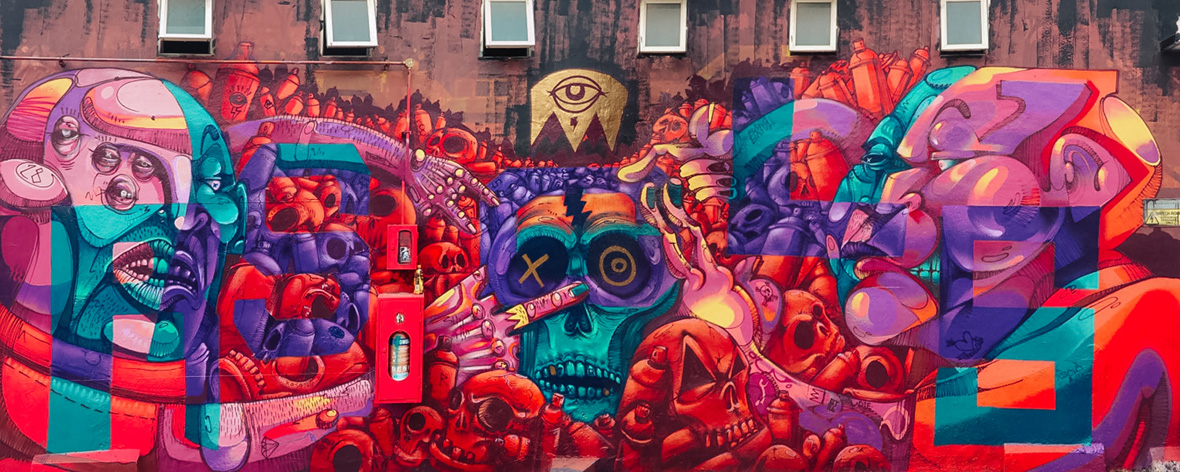
SONG feels that the current generation of graffiti writers in Singapore has become bolder with their visual expressions. This attitude has led to the emergence of fresh graffiti styles that differentiate themselves from the work of Singapore’s pioneers.
“We have a lot of respect for those that came before us but I think each generation has an individual way of developing and for us it’s about daring to incorporate and experiment with styles and techniques that are new here,” he explains. “With limited space, we have shifted our focus to refining our craft.”
SONG 认为,新加坡当代涂鸦艺术家在视觉表达上变得更加大胆,催生出不同于前辈的新鲜风格。他解释说:“我们非常尊重前辈,但我认为每一代都有各自的发展方式。对我们来说,现在是要敢于融合、尝试在技术和风格上创新的时代。”他说,“我们需要在有限的空间里,将注意力转移在技艺的精进上面。”
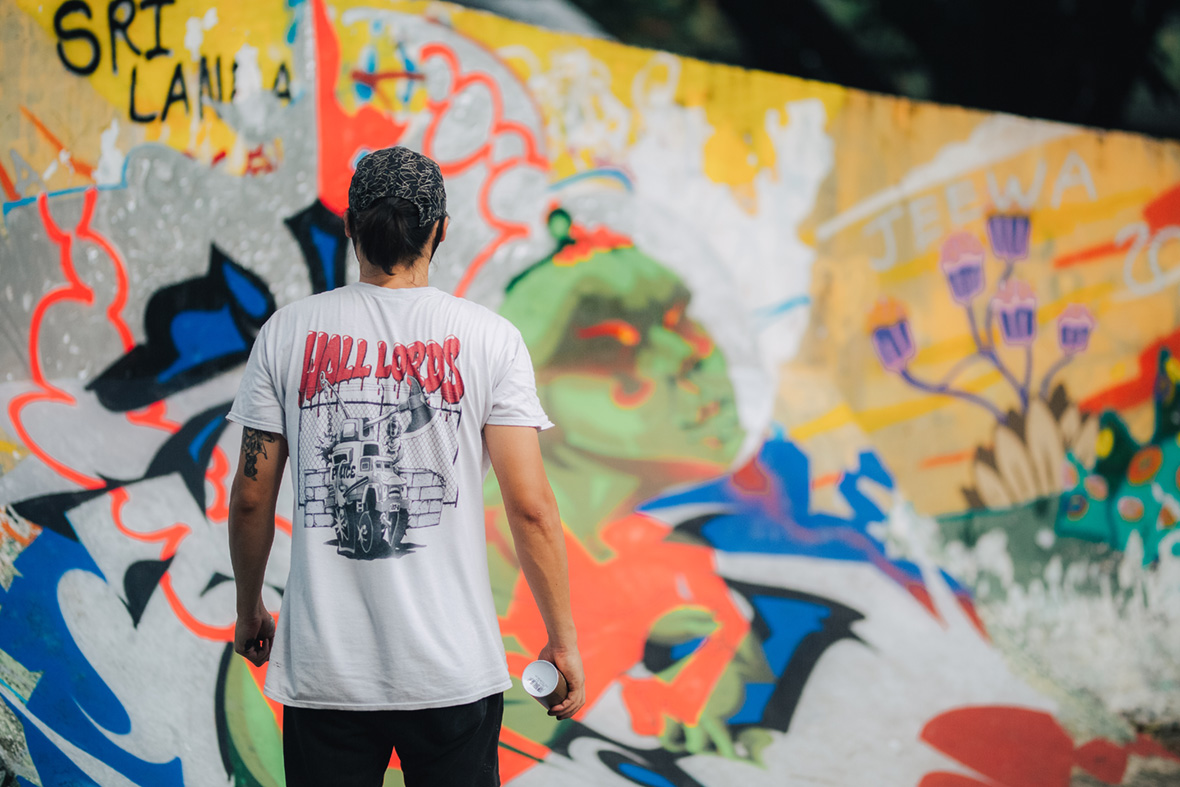
Graffiti in Singapore has become more about developing your visual identity and to him, it is really up to each individual to push themselves and the local graffiti scene forward, and to proceed with mindfulness towards how misconceptions around the art form being lowbrow or illegal can be changed.
For him, the key to developing his art at home is in looking beyond the constraints of Singapore and embracing its culture: “Due to Singapore’s small size and hectic pace of life, it’s easy to get caught in the same patterns and routines without exploring much of your surroundings and to get stuck in a bubble,” he says. “Our society is made up of four main unique cultures—that’s four different ideas about life, and it is up to you to move out of your comfort zone and explore things from a different perspective.”
当前,新加坡的涂鸦圈子更注重个人的视觉语言。对 SONG 来说,推动场景的发展需要每一位艺术对自我的不懈坚持,从而改变旁人对涂鸦文化的误解,改变他们对涂鸦所谓 “低俗” 和 “违法” 的偏见。
在他看来,在新加坡国内发展涂鸦的关键,在于如何超越当地政府的局限,让大众去接受这种文化,SONG 说:“新加坡面积很小、且生活节奏繁忙,倘若你不去探索外面的世界,便很容易陷入按部就班的模式和套路。”他说,“我们的社会主要由四种特殊的文化构成,代表了四种不同的人生观。但要不要走出舒适圈、从不同的角度去看待事情,得由你自己来决定。”
For SONG, learning to adapt to the limitations and laws has given him the drive to move forward with his art. Beyond his studio and The Blackbook, finding commissioned spaces and public art projects allows him to share his work with the local community. One such project, Art Walk Little India, saw him beautifying the shophouse facades of the precinct with murals inspired by the distinctive motifs and sculptures of the surrounding architecture.
Right now, his biggest challenge is finding the bridge between his graffiti and fine-art work. “While they may look similar stylistically, I approach both of them in completely different ways,” he explains. “Graffiti is meditative, a spontaneous way to free my mind, whereas for my fine-art work, I enjoy putting more time and thought into each piece, so I’m still looking for a way to transcend and reconcile those differences.”
For SONG, while his roots will always be in graffiti, he sees it as an art form that is egocentric in nature. Ultimately, his artistic vision is to translate many of his experiences from the streets into something bigger than himself—the energy and attitude that graffiti has given him, however, won’t change.
对 SONG 来说,学会对新加坡管制和法条的应变能力,成为促使他持续创作的推动力。除了他的工作室和涂鸦创作基地 The Blackbook,寻求受委托场地和公共艺术项目,也为他带来更多施展自我的机会。例如他的作品《Art Walk Little India》,以当地建筑物上的精致图样和雕塑为灵感,用壁画为该区步行街店面装饰。
现在,他最大的挑战是在涂鸦和纯艺画作之间找到一座桥梁。他说:“虽然它们在风格上看起来或许相似,但创作过程却大不一样。”他解释道,“涂鸦几近于冥想,是一种自发的释放心灵的过程;而对于纯艺的创作,我更会在作品想法与理念上倾注大量时间。目前,我仍在寻找能克服和消弭两者创作上差异的办法。”
虽然涂鸦是 SONG 的根基,但他认为涂鸦本质上一种以自我为中心的艺术形式。在他长久以来的艺术愿景中,他希望过往的经历能换做超越自我的创造力 —— 涂鸦给予他的力量和态度,将永远不会改变。
Like our stories? Follow us on Facebook and Instagram.
Instagram: @song.rscls
Contributor: Nicholas Leong
Photographer: Jufri Hazhar
Chinese Translation: Yang Yixuan
Additional Images Courtesy of SONG

